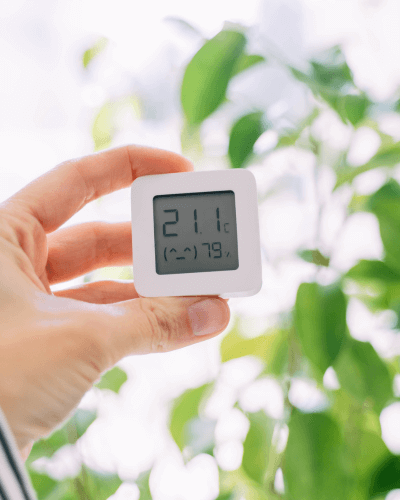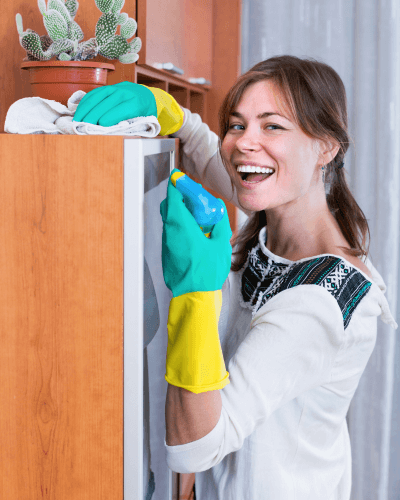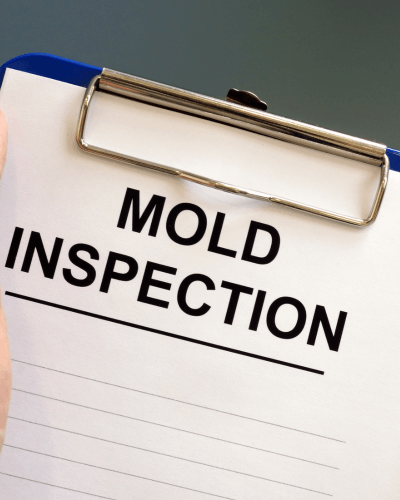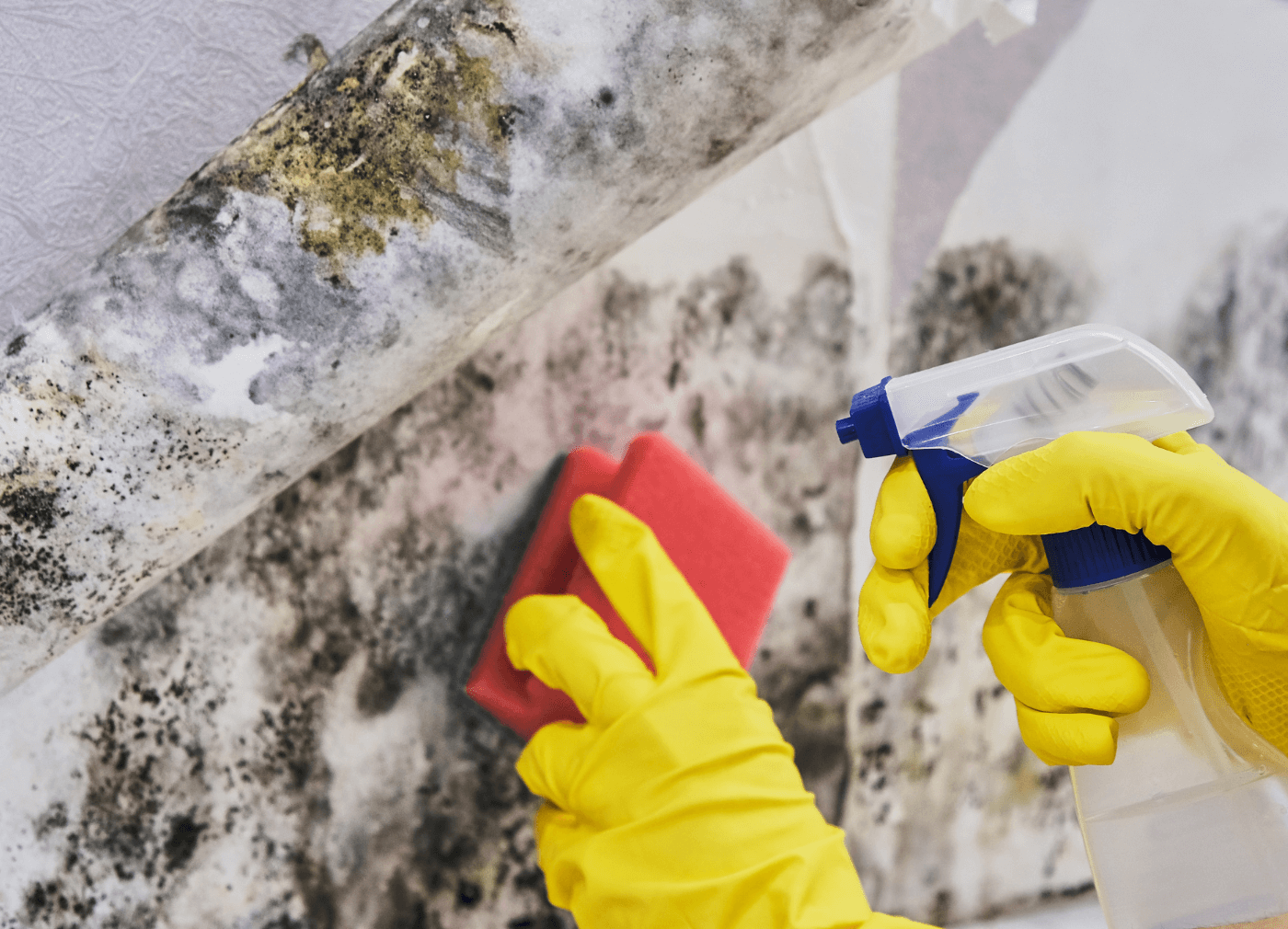Singapore’s warm tropical climate offers year-round warmth and lush greenery. However, the downside is the extreme humidity. High humidity is a major problem in Southeast Asian nations because it is the leading cause of mold.
Mold thrives in damp, warm environments, and mold spores can be found everywhere. When the conditions are right, they proliferate rapidly.
Mold season in Singapore can be a real challenge, especially during the monsoon season. From July to September, when rainfall is heaviest, mold growth reaches its peak. In this article, we will discuss what you need to know about mold and how to remove it from your walls and home.
Why is Mold a Problem?

Mold can cause serious health issues and trigger allergies, respiratory problems, and even severe infections. But that’s not all. Mold can also damage your home and lead to discolouration when it grows on walls, ceilings, and floors. It eats away wood, fabric, and drywall and leaves behind an unpleasant musty smell that’s hard to ignore. That’s why removing mold from walls and ceilings isn’t just about comfort; it’s also about health and property.
Understanding Mold Growth
Before tackling mold, it’s important to understand how mold grows. Mold spores are the microscopic seeds of mold. When these spores find a suitable environment with moisture, warmth, and a food source, they begin to germinate and grow.
Mold needs three things: organic material, moisture, and the right temperature. Your walls, carpets, and wooden furniture offer plenty of organic material. The tropical climate in Singapore provides both moisture and the right temperature.
Identifying Mold
Not all mold looks the same. It comes in various colours like black, green, or white. There is even a species of pink mold usually found in bathroom showers. Some molds are easy to spot, while others lurk in hidden corners.
Look for discolouration on walls and ceilings. Pay attention to a persistent musty smell. These signs are often the first indicators of mold in your home.
How to Prevent Mold Growth
These are some steps you can take right now to prevent the growth of mold.
1. Control Humidity

Humidity levels in Singapore can easily exceed 70%. That is perfect for mold to grow. To counteract the ambient humidity, you can use a dehumidifier. So, invest in a dehumidifier for your apartment. Dehumidifiers reduce indoor humidity and make it harder for mold to grow. Place them in damp areas like bathrooms and kitchens.
2. Improve Ventilation
Since you cannot dehumidify an entire apartment it is also important to maintain proper ventilation.
Good airflow reduces humidity and prevents moisture buildup. Open windows and allow fresh air to circulate. Use exhaust fans in bathrooms and kitchens to expel moisture. If you cannot use a dehumidifier, use a fan to help keep indoor areas dry and mold-free.
3. Keep Walls Dry
Water spills and leaks are mold’s best friends. Clean spills immediately and check for leaks in pipes, and windows. For those living on the top floor, it is important to keep a watchful eye on seepage through the roof and gutters that drain the roof. Regularly inspecting these areas can prevent water damage and mold growth. Repairing leaks promptly is crucial.
4. Use Mold-Resistant Products
When renovating or building, opt for mold-resistant products. These materials reduce the risk of mold establishing itself in the first place. Using waterproof and fungi-proof plywood (often referred to as marine-grade plywood) is essential. Additionally, using mold-resistant paint helps prevent mold growth.
Long-Term Strategies for Mold Prevention
Besides the above steps, you also need longer-term solutions. Mold is persistent and a proper strategy is necessary to fight its spread.
1. Regular Cleaning

Regular cleaning using mold-specific cleaning agents keeps mold at bay. Focus on damp areas like bathrooms and kitchens and clean hidden spots like behind refrigerators and under sinks. Regular cleaning prevents small mold colonies from growing larger.
2. Monitor Indoor Plants
Plants add beauty and freshness to your home, but they can also add moisture. Overwatering plants increases indoor humidity. Use a moisture meter to check plant soil before watering. This simple step helps keep indoor humidity levels stable.
3. Manage Condensation
Condensation on windows and walls is a sign of high humidity. Wipe down surfaces where condensation forms. Use an adhesive window seal to prevent outside moisture from entering. Double-glazed windows are a good investment as they reduce condensation and add insulation.
4. Opt for Mold-Resistant Plants
Some plants can help control indoor humidity. Spider plants and Boston ferns are good options. They absorb moisture from the air, which reduces indoor humidity and creates a less favourable environment for mold.
Know When You Need Professional Mold Removal
You can’t do it all alone and need to enlist professional mold removal services at times. Here is how a professional can aid and assist you in keeping your home mold-free and clean:
1. Regular Inspection

Hiring professionals for a regular inspection can be invaluable. Experts can identify mold-prone areas before the problem gets out of control. Annual inspections are a good practice, especially during and immediately after the rainy season.
2. Professional Cleaning
When mold infestation is severe, professional cleaning is the best option. Mold removal experts use specialized equipment and cleaning agents. They ensure that mold is eradicated and doesn’t return.
3. Air Quality Testing
Air quality tests can detect mold by identifying the type and amount of mold spores in the air. Air is drawn through a collection device that traps mold spores. The device is then sent to a lab for analysis. This can be particularly useful if occupants have been experiencing unexplained health issues.
Quick DIY Tips
Here are some tips on removing mold from walls and ceilings. Be careful and use a mask and gloves when using chemicals.
1. Baking Soda
Baking soda is an excellent mold deterrent. Mix it with water to create a cleaning solution and use it to scrub moldy areas. Baking soda also absorbs moisture, reducing humidity.
2. White Vinegar
White vinegar is highly effective against mold. Spray it directly on moldy surfaces. Let it sit for an hour before wiping it dry. Vinegar kills mold spores and prevents new growth.
3. Tea Tree Oil
Tea tree oil is an excellent natural mold killer. Mix it with water and spray on affected areas. Leave it to dry. While more expensive than other solutions, it’s highly effective.
Why Choose Lumiair for Your Mold Removal Needs?
Living in a mold-infested home affects more than just physical health. Constant exposure to mold can lead to stress and anxiety. The persistent odor, unsightly stains, and potential health risks can be highly distressing.
You have to ensure a mold-free home for the overall well-being of your family.
At Lumiair we have a team of professionals dedicated to eliminating mold completely and swiftly with minimum hassle and disruption to your life.
Our mold removal process involves a thorough assessment of your environment, identifying the source of the mold, and implementing targeted treatments. Contact us today for a healthy and mold-free environment for yourself and your loved ones.




